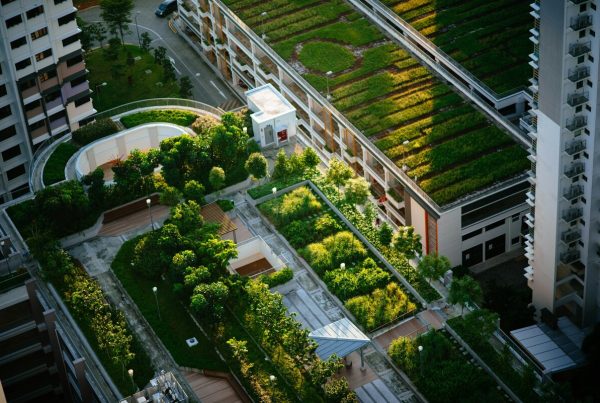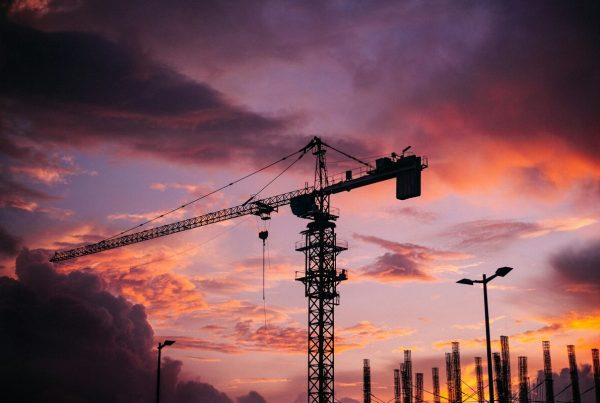The construction industry has a unique conundrum. It needs to incorporate recent innovations while tending to current demands faster than ever. Implementing building concepts that are still undergoing research and development could provide value to construction decarbonization.
Additionally, doing so will make every structure more climate-resilient and energy-independent, even though these are new methods. What are some of the most impactful in the early stages of future-ready building design?
Ecomimicry
Regenerative design and biomimicry have been architectural trends for years, with frameworks like the Living Building Challenge and Regenerative Architecture Index for guidance. Ecomimicry may outdo both strategies when it comes to an environmentalist perspective. It takes natural processes from biomimicry and the restorative elements of regenerative design and employs both in an eco-friendly manner.
Ecomimicry is an answer to the modern environmental problem of blandscaping. This phenomenon encourages grassy spaces, but they are not considerate of native species. It makes them uniform in design, so urban green spaces could look alike even in different climates. The objective is to incorporate as much greenery as possible without nuance. Ecomimicry could solve this oversight, inviting pollinators back by rewilding alongside built environments.
Adaptive Reuse
Adaptive reuse takes existing buildings and preserves their foundations while incorporating more sustainable improvements. It is an advanced form of retrofitting because it considers more elements of just environmentalism, such as cultural preservation in architectural design and material use. The building may also serve a different purpose — a church could become a brewery, or a bank may become a community center.
Advanced, Low-Impact Concrete
Concrete emits 8% of the world’s greenhouse gases, making it one of the most significant opportunities for future-ready buildings. Numerous innovations promise carbon-friendly concrete.
The world’s first 100% recycled concrete building was built in France in 2024, saving the extraction of 6,000 tons of virgin materials in the process. The structure utilized several novel strategies, reimagining this ecologically destructive material. It proved recycling is possible, and supplementing concrete rubble with recycled materials like sand and steel slag boosted its structural integrity and life cycle.
Other low-impact concrete inventions include enhanced carbon sequestration. Advanced precast concrete could become carbon-negative by adding nanoscale titanium dioxide or lime. During creation and processing, reactions will occur to make it the perfect housing for carbon while making concrete less expensive than conventional cast-in-place installations.
Natural Insulation
Eco-aware methods are moving past toxic insulation and incorporating renewable, recyclable, chemical-free options instead. Mycelium insulation — made from fungi — is an up-and-coming technique that can save up to 87.4% of energy in winter, while other imaginative minds are repurposing tossed mattresses to control internal environments.
These options are diverse and applicable to the entire home or buildings, including the most temperature-sensitive regions. Insulating these often forgotten areas with sustainable materials is critical to keeping spaces temperature-controlled and optimizing the running of modern HVAC systems. Insulation results in massive cuts to energy bills and saves on replacing over-stressed heating and cooling equipment, assisting in the overall sustainability of the home or building.
Natural insulation also encompasses methods outside of the building’s envelope. Green roofing is an organic insulator that absorbs water and heat to keep the building more temperate. It could be the reason urban heat islands regulate and make neighborhoods more future-ready by reducing the number of food deserts. Other cool roofing options include paint or solar panels, which may save 7%-15% on cooling costs.
Embedded Biomass Generation
When people think of biomass energy, most think of stoves and boilers, but future-ready buildings could have algae windows instead. Embedded biomass systems could be more sustainable because they harness carbon dioxide and generate energy from the sun like a solar panel. They promote algal reproduction, giving homes plenty of feedstock for renewable power, as well as a cooling effect equivalent to a green roof.
Building Energy Simulations
Designers and builders have used tools like Revit or AutoCAD and other building information modeling to draft their ideas. Combining this with building energy simulations would add another layer to urban sustainable development.
These assets incorporate artificial intelligence and machine learning — among other integrations — for advanced insights and decision-making opportunities. They predict the energy efficiency and performance of a building based on the most minute details, including building orientation, historical weather data and the home’s materials. This saves builders from wasting materials during construction and considers the home’s compatibility with smart energy systems before installation.
Future-Ready Means Sustainable
A building must embrace ecologically optimized techniques and materials to be prepared for the environmental stressors of the future. Otherwise, the sector will struggle to keep up with the housing crisis amid natural disasters and building code advancements.
Developing a willingness to experiment with these innovations will give the industry more in-depth knowledge of their effectiveness, longevity and global impact. Therefore, sector experts must start now to keep up with the changing climate.











